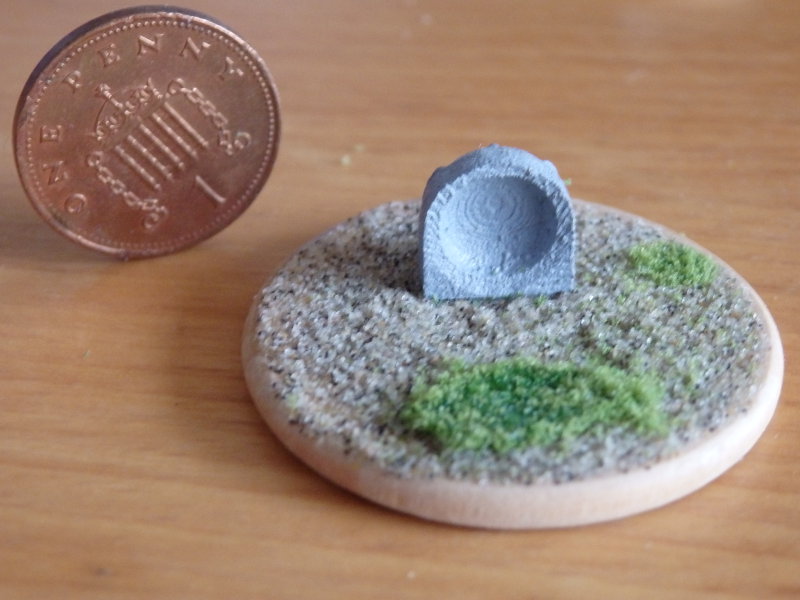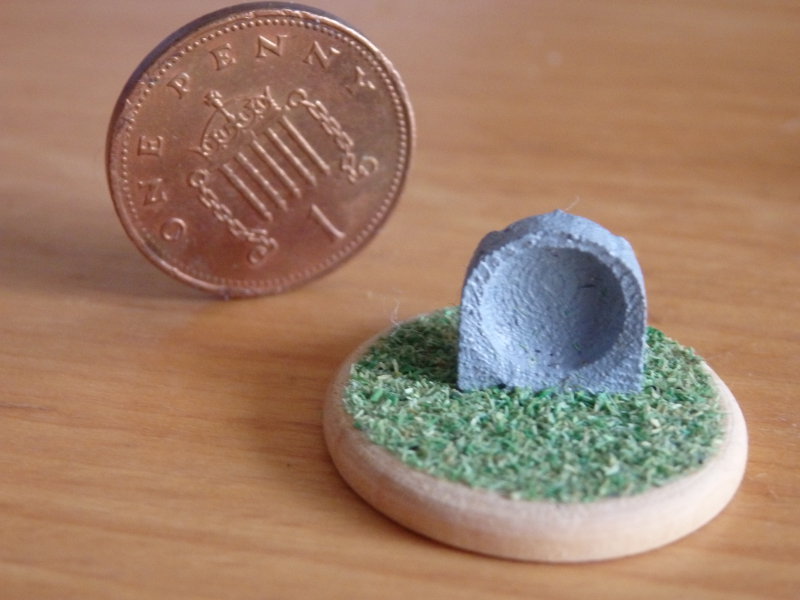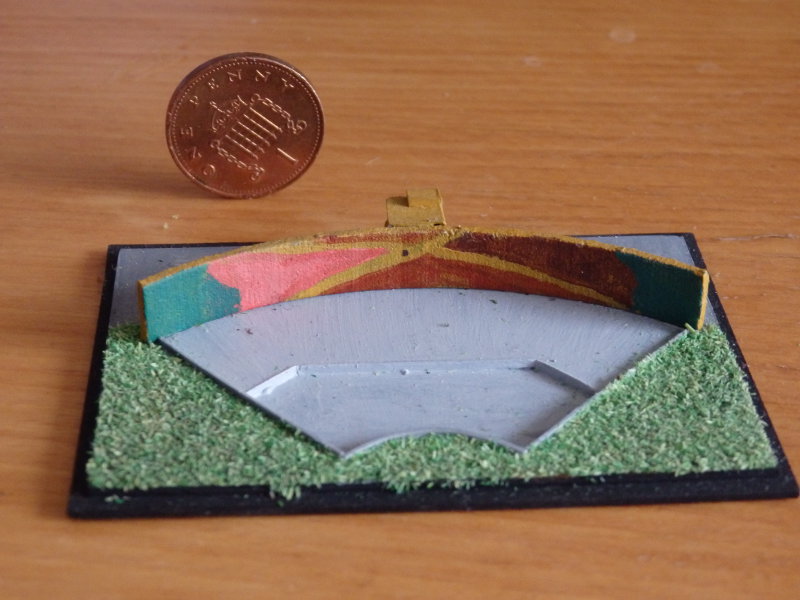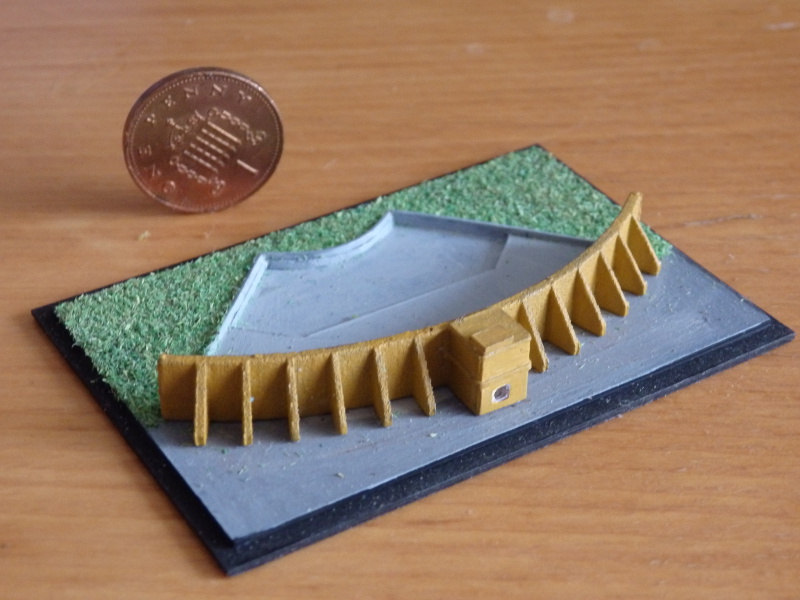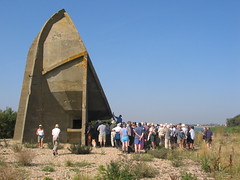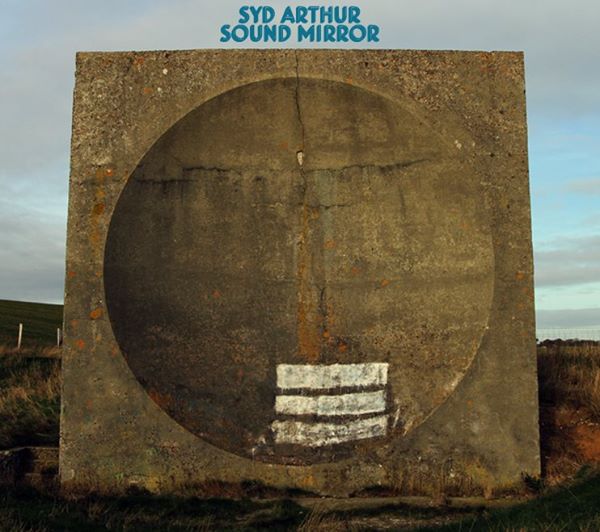After learning about the existence of these curiously primitive and imposing pieces of outdated surveillance equipment, which are still standing along stretches of England’s coast, artist Tim Bruniges recreated these interactive objects in a gallery setting. Earlier this year [2014], in an exhibition called MIRRORS at Brooklyn’s Signal gallery, Bruniges installed a pair of 9 by 9 foot sound mirrors that he constructed from wood and concrete with microphones embedded in their center. The sculptures faced each other to create an interactive sound experience for visitors to the cavernous gallery space.
More: Sound Mirrors Echo Obsolete Military Technology as Art Installation, Andrew Salomone, Makezine, 28 August 2014.
